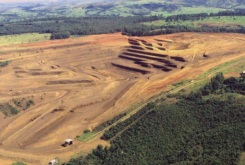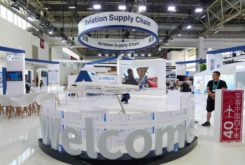The proposal for the construction of a railway line involving three southern African countries – Mozambique, Zambia, and Zimbabwe – with an estimated cost of US$ 2.5 billion at the outset was presented this year by China Tiesiju Civil Engineering Group authorities in Harare, local media reported.
Originally submitted on 20 March 2018, the proposal consisted of a letter addressed to Minister of Transport Joram Gumbo and Christopher Mutsvangwa, adviser to President Emmerson Mnangagwa, in which the Chinese company expressed its interest in participating in the construction of the railway line across the three countries, in partnership with the local company Global Power Bridge International (GPBI) and with the government of Zimbabwe.
The Financial Gazette wrote that this initiative by the Chinese company, one of the largest in the world in the railway sector, comes at a time when President Mnangagwa intends to deepen the economic relationship between his country and China. In addition, large projects that have been approved by its predecessor actually do see the light of day.
Gang Shao, vice president of China Tiesiju Civil Engineering Group, which is a subsidiary of China Railway Engineering Corporation, said in the letter that his company was co-operating with Global Power Bridge International Ltd to carry forward the construction of the proposed project and included “we are ready to start construction work.”
The letter asked for information on the procedures necessary to move forward with the railway line project and added “we would like to count on your support and co-operation … in order to expand the business agendas of both our countries. ”
More recently, in late July, Gang Shao traveled to Harare to maintain contacts with the government of Zimbabwe and with the company partner in this project, according to the Macauhub news agency.
The 1,700 km railway line, that will have a direct impact on the lives of at least two million people, will link Kafue in southern Zambia to the western region of Machonaland in northern Zimbabwe. Thereafter it will reach Nampula, in the north of Mozambique, from where it will continue to the port of Nacala.
This transzambian project is one of the five designed by the China Tiesiju Civil Engineering Group for Zimbabwe. The remainder projects being a US$ 500 million soybean production project in Binga, a railway line with an extension of 40 km between Harare and Chitungwiza, water supply and sanitation networks in Ruwa, and a shopping center in the same city, where it is expected that US$40 million will be invested.
The Financial Gazette also wrote that the railway line could be operated by the Chinese company, under concession, to send about two million tons of Zimbabwe soybeans to the coast of Mozambique, specifically to the port of Nacala, for export to China.
“This single-track line will cost US$ 1.5 million per km, according to the World Bank, and we intend to use it for the export of soybeans,” stated China’s Tiesiju Civil Engineering proposal, adding that they already have orders from a Chinese importer.
An article published recently in China-Lusophone Brief (CLBrief), an information service on China and the Portuguese-speaking countries, said that Mozambique could have a role to play in the new generation of railways in Africa.
The article notes that the new wave of railway construction pays more attention than previously to the real needs of African countries, such as those being built to connect the ports of Mombasa and Dar-es-Salaam in the Indian Ocean, to countries without direct access to the sea in the Great Lakes region.
“Mozambique could be one of the major players in this second railway revolution. Since the railways it offers serve primarily to carry coal, they could also serve to support the growth of cross-border trade.”
Railway lines carrying coal from South Africa and Botswana for export may be used to transport other products and the lines that exist in the north-central region of the country may also be used to transport the products that the countries without access to the sea of the region, such as Malawi and Zimbabwe, need to export.
In addition to the Sena line linking Moatize to Beira port in the Sofala province, there is another line built during the colonial period linking the port to Zimbabwe, Zambia, and the Democratic Republic of Congo, which is in operation until Zimbabwe receives a massive investment to take back the idea that was at its origin.



